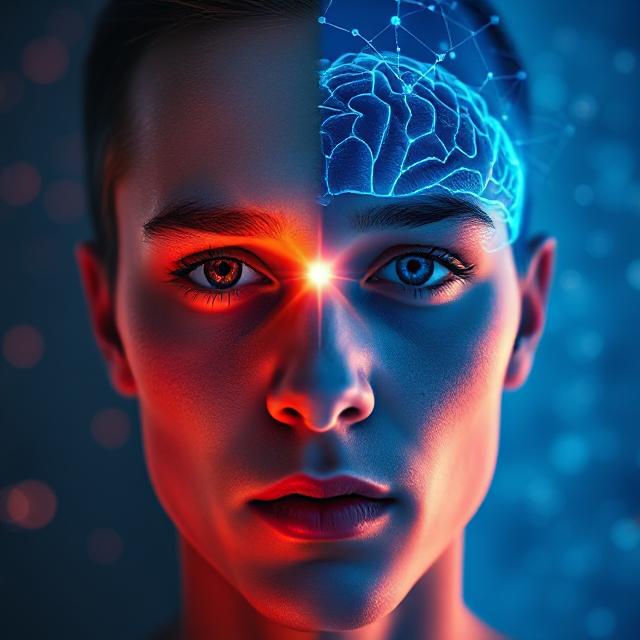Your cart is currently empty!
Do We Believe What We Feel or What We Think?

Table of Contents
Do We Believe What We Feel or What We Think?
In moments of decision or debate, we often assume we’re guided by reason. But are we really? Or do our emotions do the heavy lifting, while reason simply follows along for justification?
This age-old question—do we believe what we feel or what we think?—sits at the heart of psychology, philosophy, and even neuroscience. Understanding how humans form and cling to beliefs requires diving into the tug-of-war between emotion and reason, intuition and intellect, feeling and logic.
Let’s unpack this psychological paradox and explore what it reveals about belief formation, truth, and personal identity.
I. The Two Minds Within Us
Psychologist Daniel Kahneman popularized the concept of System 1 and System 2 thinking in his book Thinking, Fast and Slow:
- System 1: Fast, emotional, automatic, intuitive.
- System 2: Slow, deliberate, logical, analytical.
When we encounter a claim—whether political, religious, or personal—our gut often reacts before our reasoning does. We “feel” that something is true, and only afterward do we search for reasons to back it up. This is called motivated reasoning.
Example:
- You hear a rumor that aligns with your worldview.
- You feel it’s true before you verify it.
- Then you look for arguments or sources to defend your position.
In most people, feeling precedes thinking—and thinking is shaped by feeling.
II. Emotion: The Hidden Driver of Belief
A. Beliefs as Emotional Anchors
Beliefs aren’t cold data points. They are stories we tell ourselves to feel safe, right, or connected. Emotional needs—like the need for certainty, purpose, or community—often drive what we believe more than any factual input.
B. Fear, Hope, and Identity
- Fear fuels conspiracy theories and rigid ideologies.
- Hope feeds spiritual faith and optimism.
- Identity shapes belief boundaries: “people like us believe X.”
Neuroscience supports this. The amygdala, which processes emotions like fear, often activates before the prefrontal cortex (which handles logic). Emotion quite literally gets there first.
III. Reason: A Tool, Not the Master
While emotion shapes the soil of belief, reason is still the gardener. It can prune, reframe, and even uproot beliefs—but only when people are willing and psychologically safe.
A. The Role of Education
People trained in critical thinking and logic can sometimes override emotional impulses. But even the educated are prone to confirmation bias and cognitive dissonance.
B. Rationalization ≠ Reason
Often, what we call “reasoning” is just post-hoc rationalization—coming up with justifications for what we already feel.
“We think we’re lawyers arguing for truth. But we’re often lawyers defending a client—ourselves.”
— Jonathan Haidt
IV. Why Feeling-Based Belief Is So Persistent
A. Evolutionary Psychology
Our ancestors didn’t have time to analyze threats. Emotional snap judgments helped them survive.
- Hear a rustle? Assume it’s a predator, not the wind.
- Feel social rejection? That could mean death in a tribe-based system.
Emotional belief is fast and protective—but also fallible in a complex modern world.
B. Social Reinforcement
We absorb beliefs that make us feel accepted. The tribe validates us, and we feel safe. Rational belief, if it isolates us socially, is harder to maintain.
V. When Logic Triumphs—and When It Fails
A. Logic Wins in Low-Stakes, High-Education Contexts
In scientific labs, courtroom debates, or academic philosophy, logic can override emotion. But even then, human bias slips in.
B. Logic Fails When:
- The belief is emotionally charged (e.g., politics, religion).
- The person feels threatened.
- The belief is tied to group identity.
Even scientists and skeptics can be irrational when their emotional beliefs are challenged.
VI. Bridging Emotion and Thought: A Healthier Belief System
A. Emotional Intelligence
Understanding your emotions helps you question them without dismissing them.
- “Why do I feel this is true?”
- “What fear or hope underlies this belief?”
B. Intellectual Humility
Recognizing that you can be wrong opens the door to better reasoning.
C. Integrative Thinking
Rather than pit emotion vs logic, we can see belief as an interplay:
- Use emotion to ask what matters.
- Use reason to investigate what’s real.
VII. Belief Formation in Practice
Here’s how belief typically forms:
- Emotional Trigger – a story, experience, or claim resonates.
- Intuitive Judgment – we feel that it’s true or false.
- Rational Backfill – we search for reasons to support the feeling.
- Social Validation – others agree, reinforcing the belief.
- Entrenchment – over time, the belief becomes part of identity.
Changing a belief? That means changing all of the above—which is why it’s so rare and so meaningful when it happens.
VIII. Final Reflection: So, What Do We Really Believe?
Do we believe what we feel or what we think? The answer is both—but not equally.
We believe what we feel first, and then we try to think it through—but our thinking often just confirms what our emotions already told us.
However, the most resilient and truthful beliefs are those where emotion and reason harmonize. When a belief not only feels right but holds up under scrutiny, it becomes a foundation we can stand on, even when challenged.
